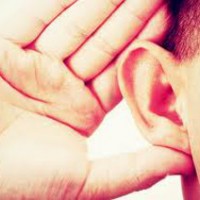National Hearing Test offered free until Father's Day
Nearly half of adults over age 48 experience hearing loss, but far too few seek help. Left untreated, hearing loss can lead to job loss and income reduction, social isolation, embarrassment, and significantly lower quality of life. Hearing loss is irreversible, but if caught early steps can be taken to keep it from reducing your quality of life.
This was the impetus for a new hearing test now widely available in the United States and offered for free in May and until Father's Day in recognition of Better Hearing and Speech Month.
Developed by hearing scientists with funding from the National Institutes of Health, the National Hearing Test is a quick and accurate hearing screening. It can be conveniently taken over a telephone in the privacy of one's home or office. To take the test, call the toll-free National Hearing Test number at (866) 223-7575 and follow the directions provided. The test takes approximately 10 minutes.
The test is provided on a non-profit basis as a public service and has no financial connection with any hearing products or services. It regularly costs $8.
Communication Disorders Technology, Inc., in collaboration with scientists from two universities, launched the National Hearing Test to provide tens of millions of hearing-impaired Americans with a scientifically valid, affordable test to screen for hearing impairment.
The first of its kind in the United States, the National Hearing Test overcomes many obstacles preventing people from being screened for hearing loss, including inconvenience and cost.
Hearing tests are currently either offered as "free" by hearing aid dealers with the cost of the test paid through the purchase of hearing aids or by appointment with an audiologist or a physician specializing in hearing for a fee of up to $150.
The test works by having callers listen to a series of spoken three-digit numbers that are presented with background noise. When the caller enters the numbers correctly, the next numbers are presented at a lower, more difficult level. If an error is made, the next numbers are easier to hear. The user's accuracy is measured in real time to determine the extent of hearing loss.

